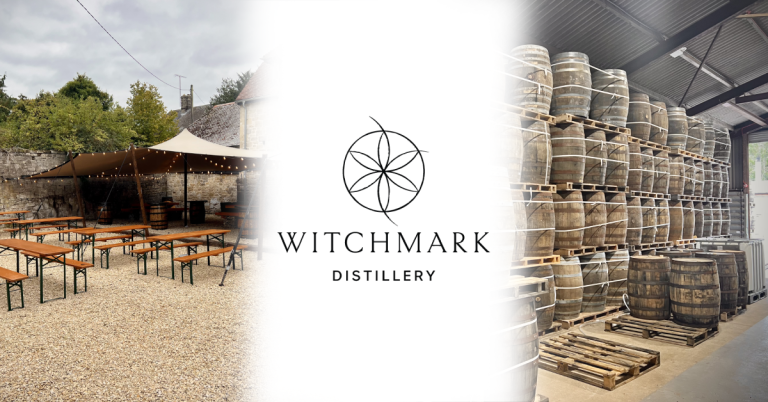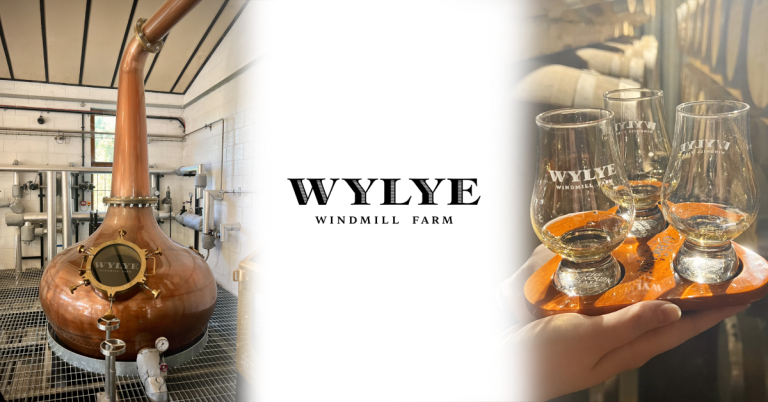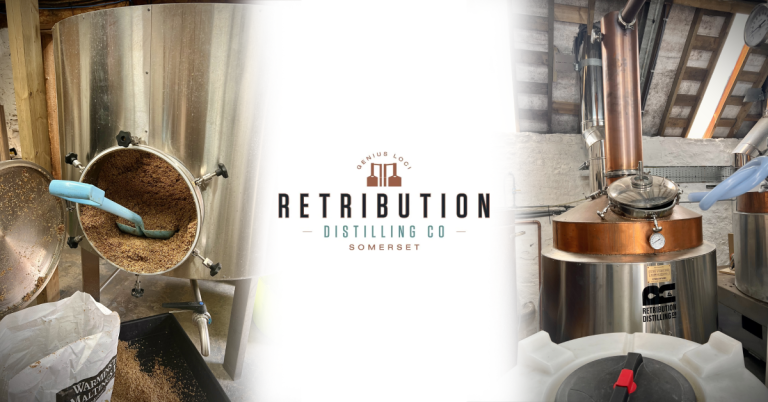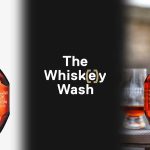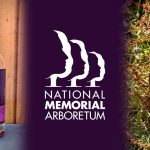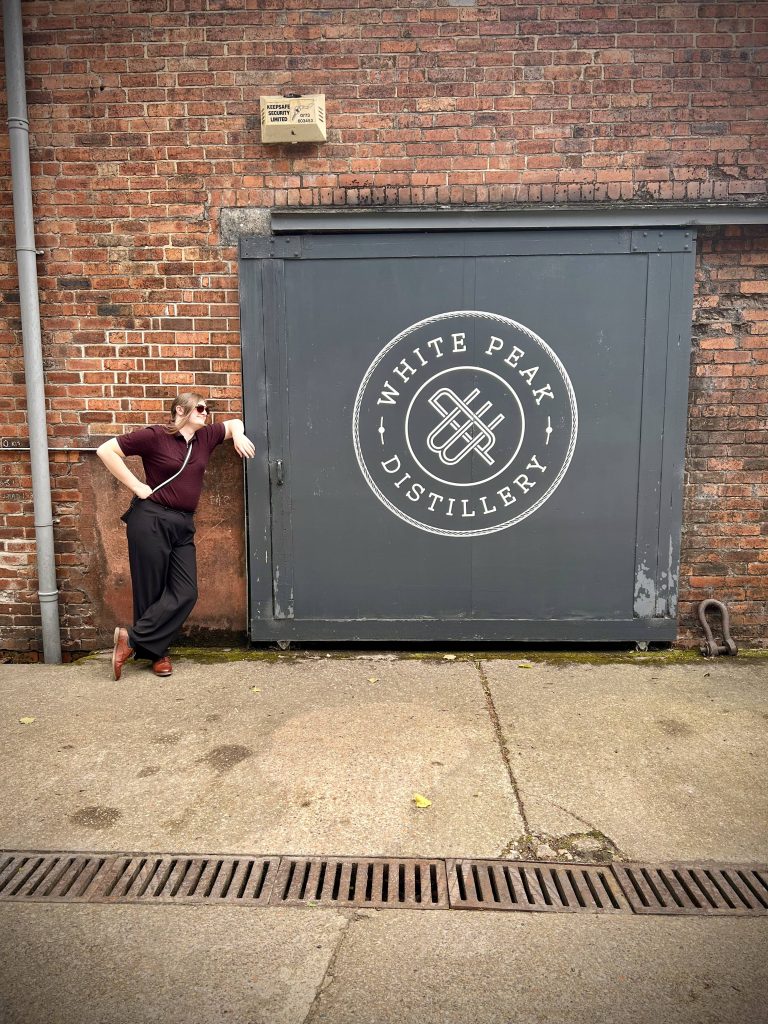
Ah, White Peak. Coming back here always feels like coming back home (maybe because it’s so close to home)! This will be my third visit to White Peak, but despite that I’ve never done a detailed breakdown of one of their tours. Last I visited I did their distillery tour and did a very quick recap of it. It was my first post on this page as a matter of fact, but it wasn’t as refined as my modern write ups are. This time around I did their more comprehensive whisky tour, which allowed me to see some parts of the distillery I’d never seen before!
My tour guide this time around was Sarah, the same distiller I had last time, and she was as bubbly as always! Starting off, when walking onto the work floor moved into the first entirely new section of the tour: heading into the back area and seeing how the grain milling operation worked!
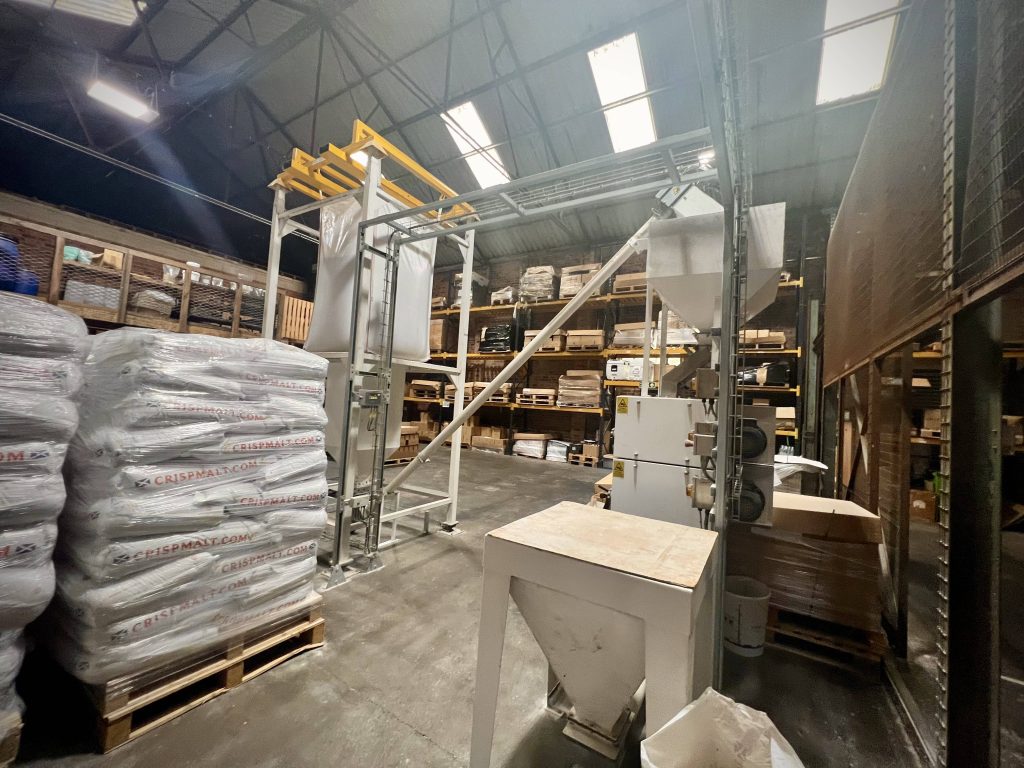

The principle of peating was explained, including how peat can change flavour based on its region, which was very cool to hear mentioned! They go on to explain how milling works to make the grist used in the mash that would become whisky. We then got the unique opportunity to feel and smell the raw barley! I believe this was peated barley, but honestly I didn’t catch which one Sarah said it was.
Next we moved to the main distilling operation, which I was more familiar with. It happened to be a fermentation and distilling day so we got to see a lot of the machinery in action! We were taught about mashing, and were allowed to smell the mash tun after it had finished a cycle the previous day (it smelled of malt, forest fruit and hay to my nose).
Fermentation is also explained, as well as the difference in the two yeasts they use, those being standard distiller’s yeast and brewer’s yeast they source from Thornbridge brewery. They also mention something I haven’t heard them talk about before, that being the importance of bacterial fermentation for flavour.
We are allowed to smell three different fermentations to show this process over time, with the first being started that day, the second being two days old, and the final one being on day five. All great stuff!
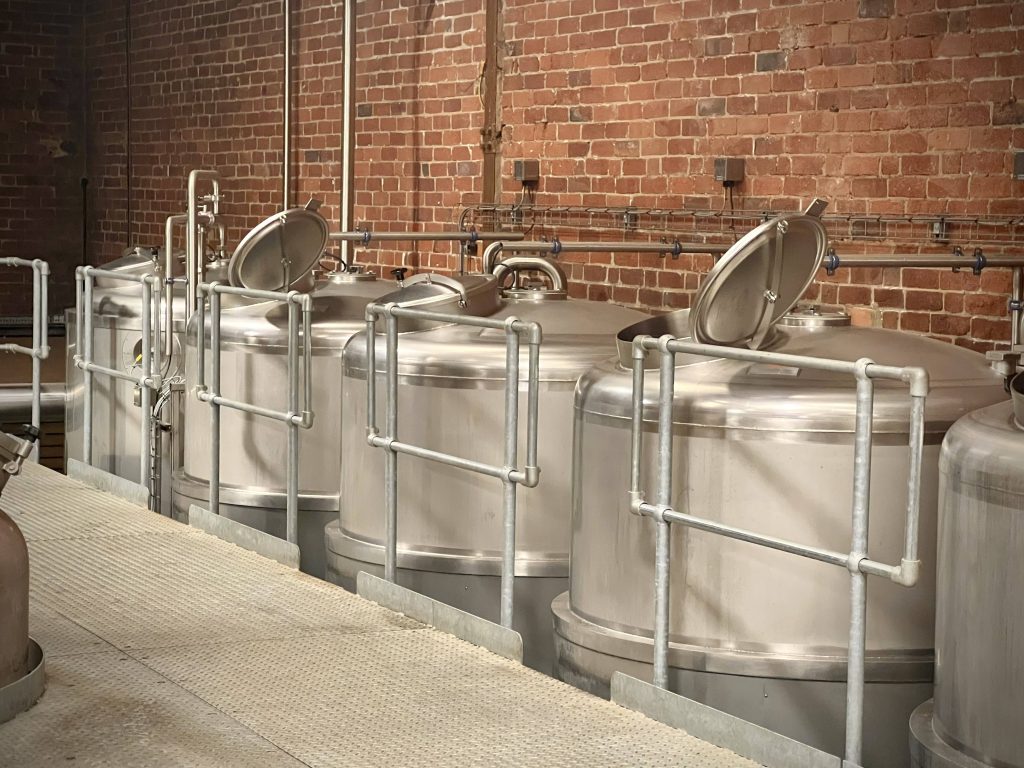

Next the process of distillation is explained, as well as the nuances of the copper/sulphate reaction and the concept of reflux and why it’s important. All good stuff to mention, especially as they also mention how the still shape affects these reactions.
Sarah also explained how all the aspects we’ve explored so far can differ from distillery to distillery in small ways, which is why two single malts from separate distilleries will never taste identical.
I don’t normally mention the spirit safe talk in these reviews, but there was a little bit of extra substance this time around.
Sarah mentioned how even just changing the cut points of an established spirit recipe can change its character drastically, which is what they did for their Alter Ego expression, the first White Peak bottle I reviewed a good few months back! We were also allowed to smell the fresh spirit coming off the still when Sarah opened the safe, something she acknowledged in Scotland would be illegal, but not here in England!

Next we had the talk about cask maturation, which was standard for the most part, save for the mention of the process of STR (Shave, Toast and Re-char) which was explained for their use in wine casks. What did catch my attention was the mention of how they source their bourbon casks now-a-days: Never Say Die, a bourbon brand designed for the English market that I’m quite familiar with. Of all places I expected their name to come up, it was not here!
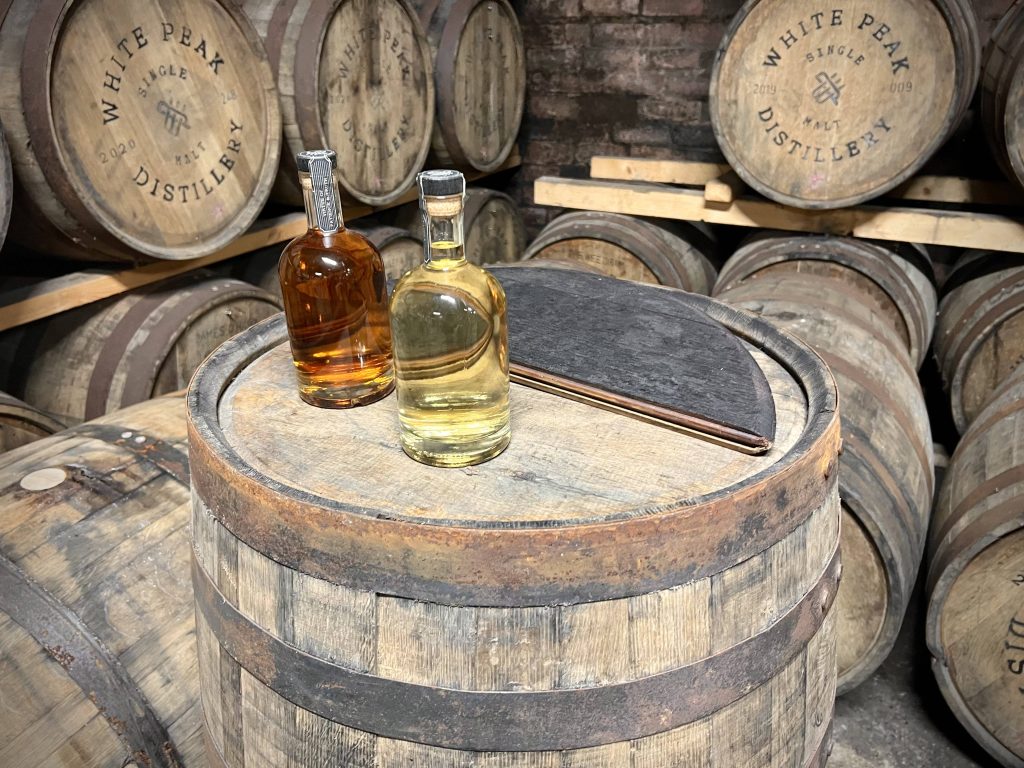
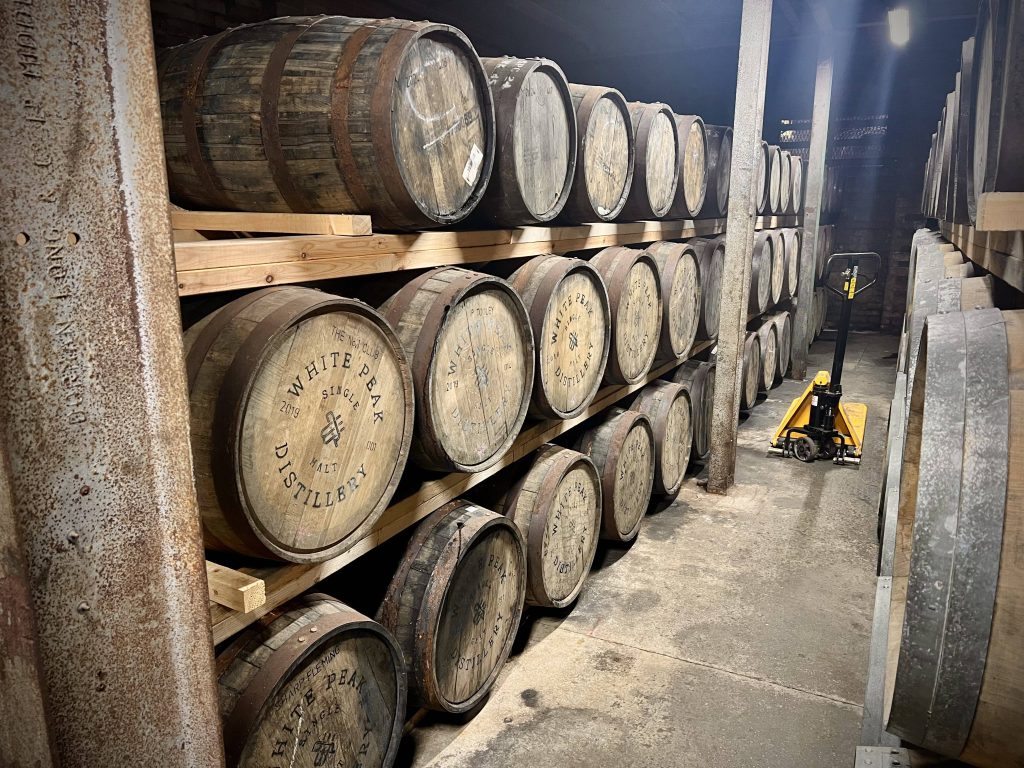

I’ll speed through this next part: we see the bottling shed, the concept of bond and duty is explained, their holding tanks and water de-ionisation systems are shown off, as well as a quick look at the column still and the hot liquor tanks.
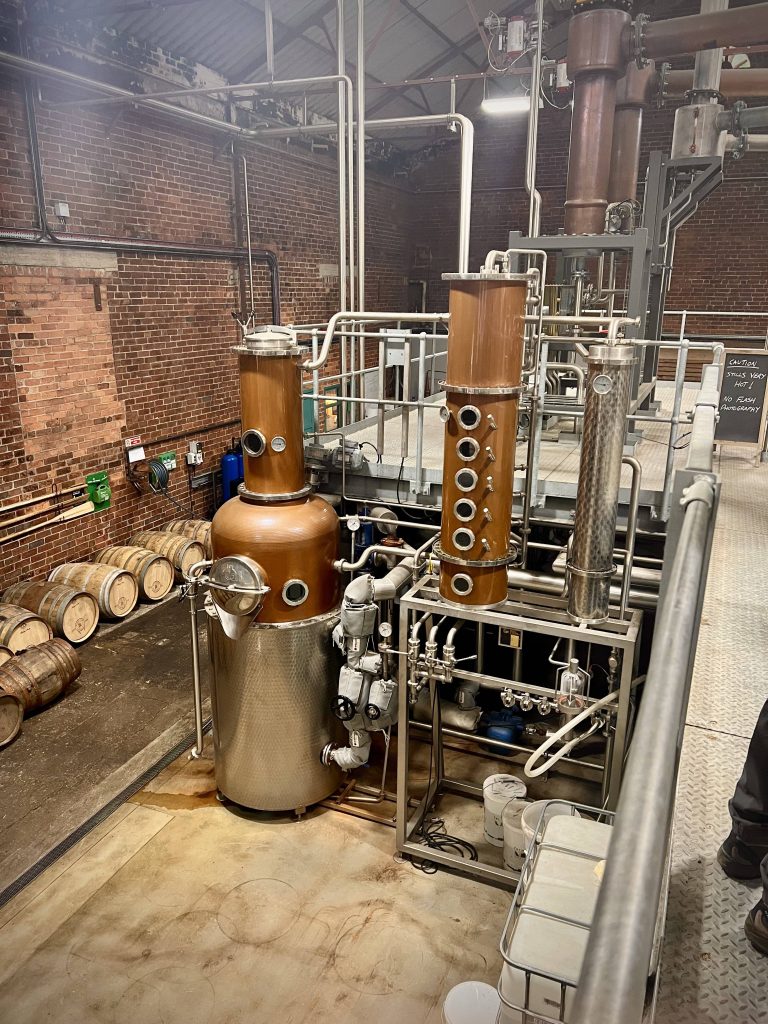
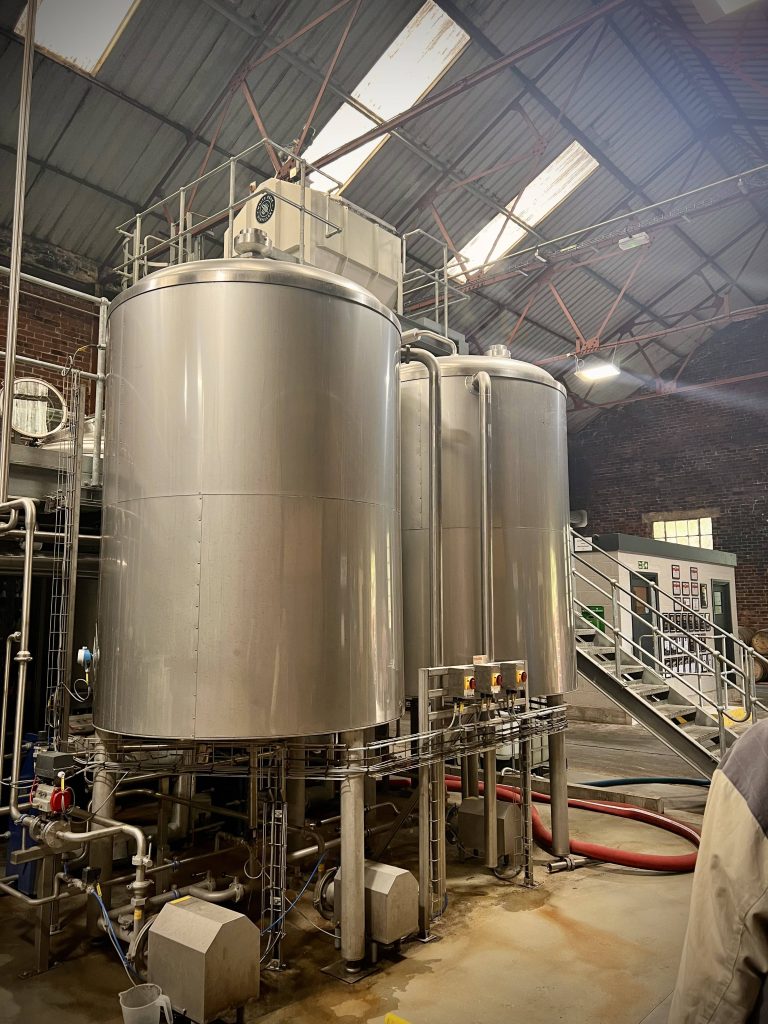
Now we’re onto the big money item for me: my first time being in their full sized cask warehouse. It really is quite a sight to behold, especially for some of the odd barrel sizes you come across, from 600L wine casks all the way to tiny 50L experimental casks.

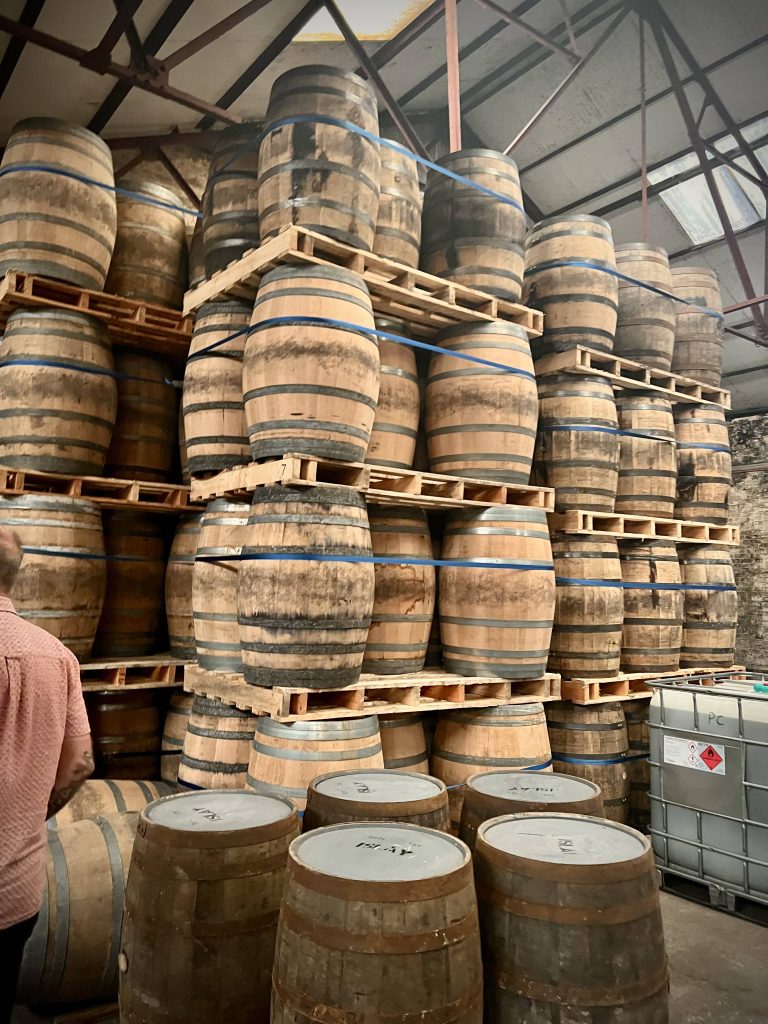
Here we are shown the equipment used to disgorge casks, as well as filter it for any parts of charred cask still in the fluid. We were also given a whiff of the new Port Cask release that they’ll (hopefully) be releasing soon! Exciting!
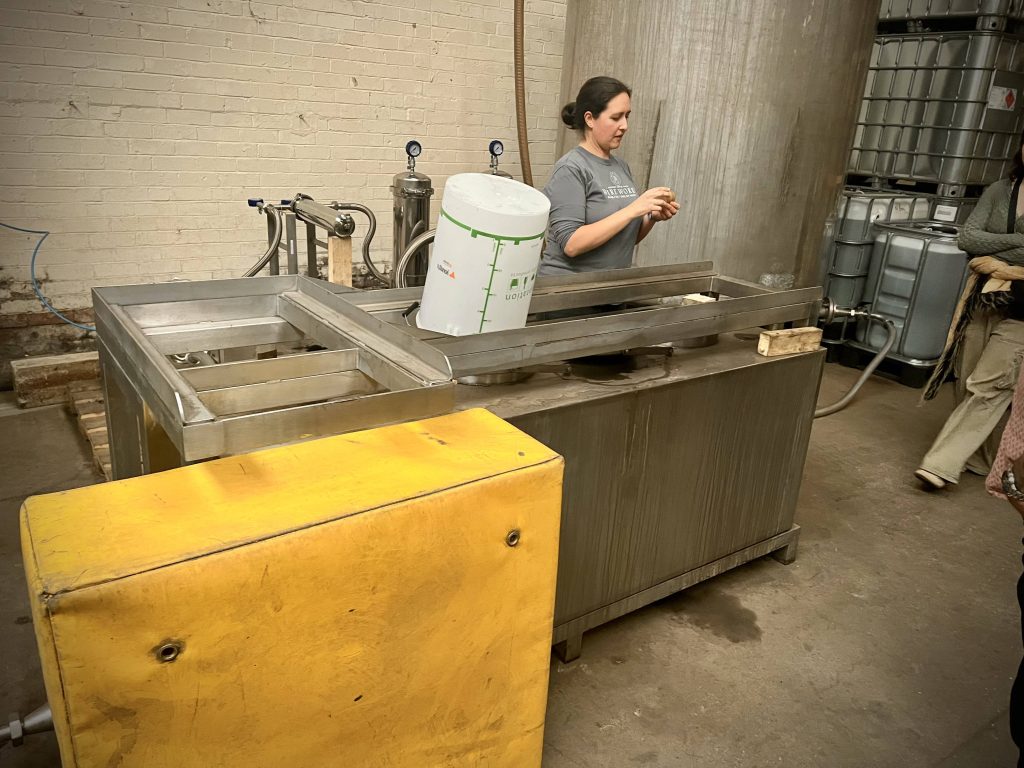
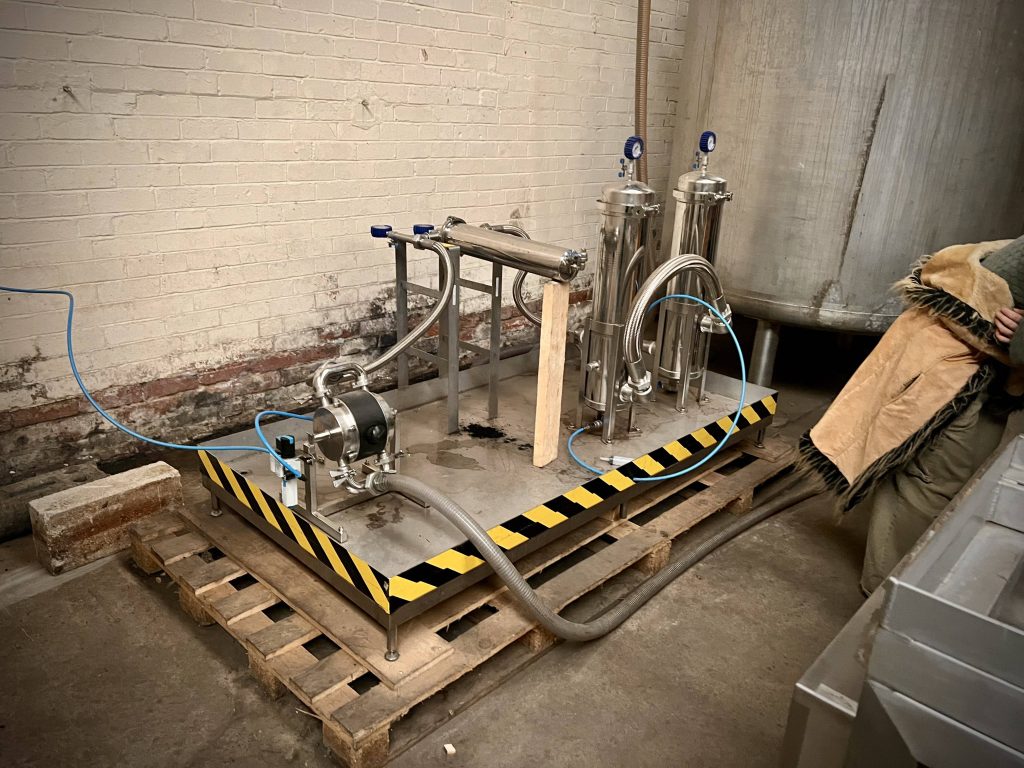
From here, we go to the tasting room, a cosy, wood fire warmed room with magazines on the table and a shelf full of bottles and books important to White Peak as a distillery. Here we get to try four Wireworks expressions. We got to try Caduro, Bourbon Barrel, Necessary Evil and Port Wine Cask, and were given a bit of history for each.
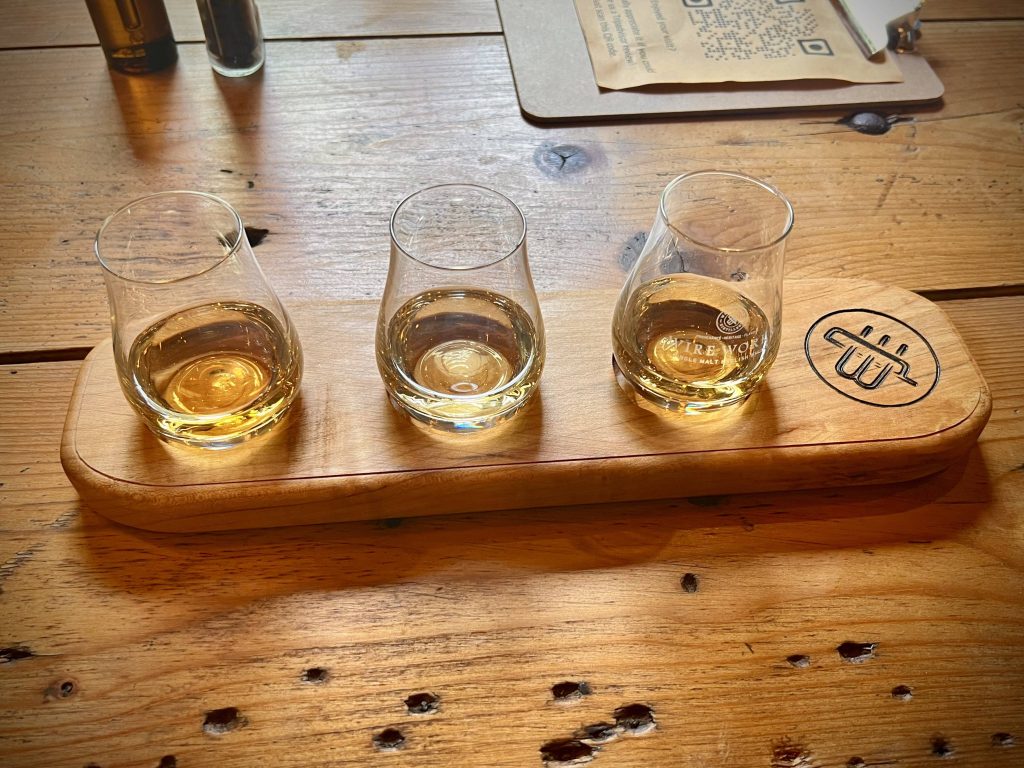
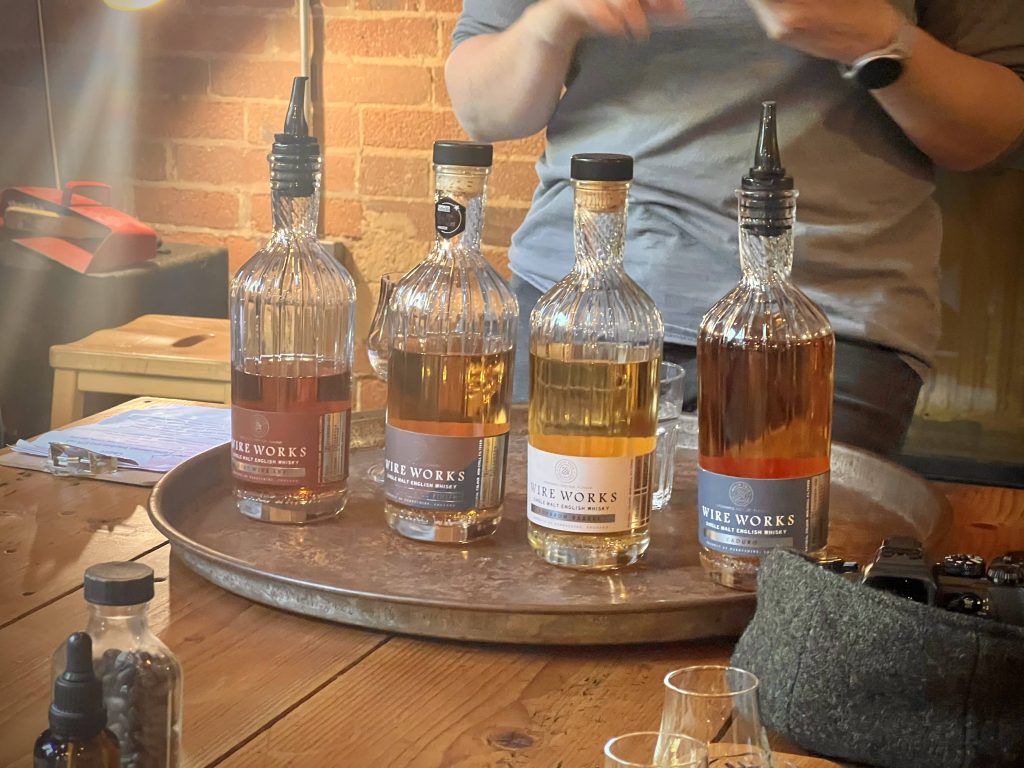
Caduro is their signature expression; it has notes of cranberry, chocolate and white peppercorn on the nose, with a palate consisting of grapefruit, paprika and frangipani, with a tastefully peated finish. Approachable and mild, a solid signature expression.
Bourbon Barrel is an expression aged only in ex-bourbon casks; with hints of mild Victoria sponge and rosemary in the aroma, and a body of dark treacle, spicy chilli and a slightly vegetal finish. Some of the newer whisky drinkers around the table said this was their favourite, and I can see why.
Necessary Evil is a whisky aged in casks from Thornbridge brewery, that held their Necessary Evil stout; the nose picks up notes of truffles and white chocolate, with the taste itself containing cacao nibs, caramel biscuit and thyme. It’s a bit thinner than the others, but has a more intense finish. Supposedly this is the most popular expression, and the group I was with seemed to echo that sentiment as it was the most enjoyed sample overall. I really liked it too, but there was one I enjoyed more.
Port Wine Cask is the original version of the new Port expression we smelled in the warehouse; with aromas of sweet, juicy raspberries and vanilla, and flavour notes of fermented grape, cooking spices and apricot jam, with a mild hint of tobacco to round it out. This was my favourite of the day, but I also learnt that there aren’t many bottles left, which is a bit of a shame.
All of the drams I’ve tried from the Wireworks line are good, they have an oily body which clings to the cheeks intensely, and are very often spicy. So if you like whiskies with a solid tingle you’ve got to give these a try! On the day I was visiting there was also a small art exhibit going on next door too, which was a nice way to round it out!
Overall, White Peak does what it always has done: makes great spirits and is a joy to visit. I always feel privileged to live so close to this distillery. Trips like this remind me not only why I became a fan in the first place, but why I still am. Big thanks to Sarah who ran our tour, and also Mary-Beth on reception for just being a really nice first impression of the distillery when you first walk in! If you’ve not been to White Peak yet, what are you waiting for? As for me, I still have one more tour I need to do here before I’ve seen all White Peak has to offer, so I’m sure I’ll be back soon enough!
This post’s recommended song is: “Fire (Part 1)” – The Struts



